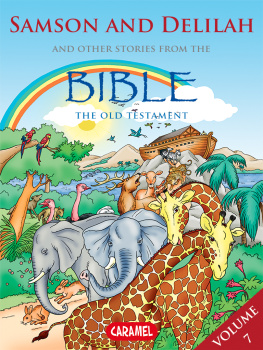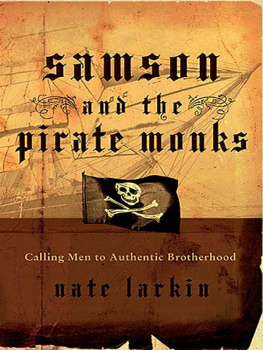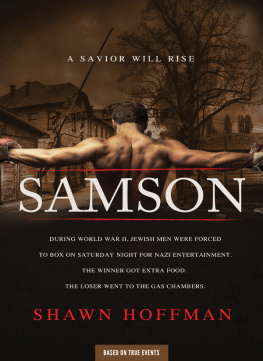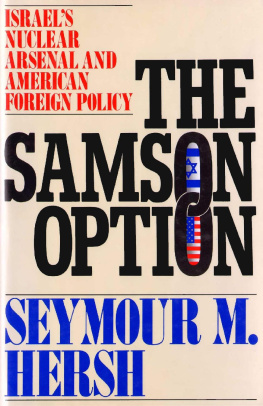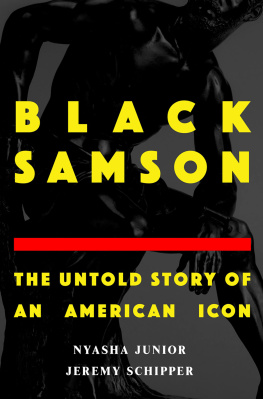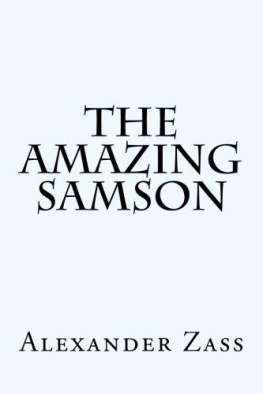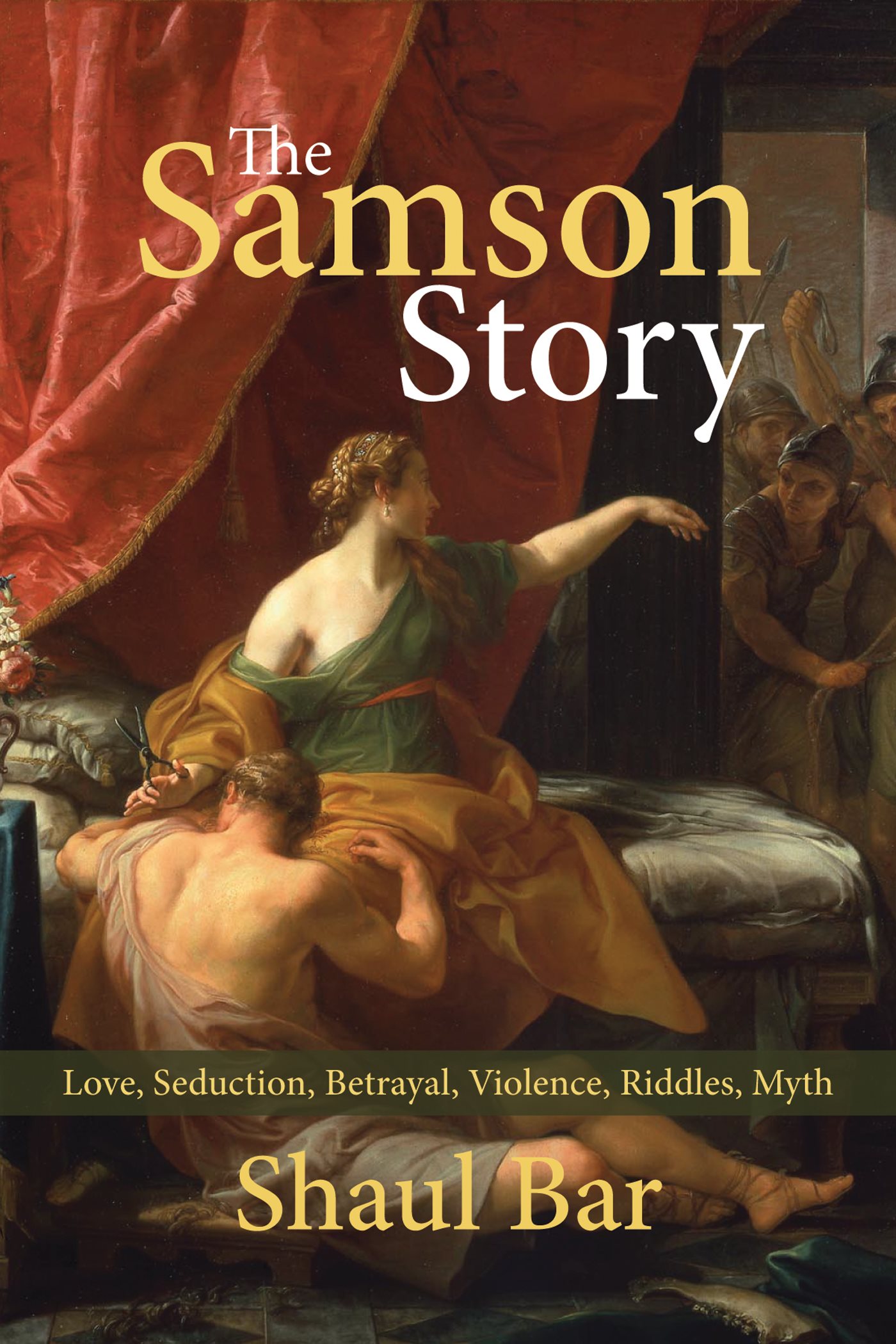T o start with, I would like to thank my two readers who read the early drafts of the manuscript and offered many perceptive and insightful comments: Anna S. Chernak, who read the initial manuscript and offered valuable advice with continuous encouragement, then Bob Turner, Circulation Librarian at the Harding School of Theology, who made many suggestions and offered his wisdom. I am grateful as well to Shoshana Cenker who read the final draft of the manuscript.
I want to express appreciation to the staff of the Harding School of Theology in Memphis. Librarian Don Meredith led me to many resources, Associate Librarian Sheila Owen helped me with research, and Evelyn Meredith supported my efforts with inspiration.
Special thanks to Hebrew Union College Library in New York City, where Head Librarian Yoram Bitton provided me with all the necessary help, wisdom, as well as friendship, and Librarian Tina Weiss who helped with my research.
Finally, a special thanks to the people at Wipf & Stock for their devotion and expertise in transforming my manuscript into this book.
Abbreviations
ABAnchor Bible
ABDThe Anchor Bible Dictionary . vols. Edited by D.N. Freedman New York: Doubleday, 1992 .
AJBAAustralian Journal of Biblical Archaeology
ANETAncient Near Eastern Texts Relating to the Old Testament. rd ed. Edited by J.B. Pritchard. Princeton: Princeton University Press, 1969 .
Ant Josephus, Flavius. Jewish Antiquities . Translated by H. St. J. Thackeray. Cambridge, MA: Harvard University Press, 1930 .
AOSupAula orientalis Supplementa
ATDDas Alte Testament Deutsch .
b. Babylonian Talmud
B. Bat. Baba Batra
B. Me Baba Me ia
BABiblical Archaeologist
BerBerakhot
BethMBeth Miqra : Journal for the study of the Bible and Its World
BHS Biblia hebraica stuttgartensia, ed. K. Elliger and W. Rudolf, Stuttgart 1969 - 1975 , 1984 .
BibBiblica
CBQCatholic Biblical Quarterly
DDDDictionary of Deities and Demons in the Bible. Ed. K. van der Toorn, B. Becking, and P.W. van der Horst, Leiden, 1995 .
EncJudEncyclopedia Judaica. ec ed. vols. Edited by Fred Skolnik. Jerusalem: Keter, 2007 .
Gen . R. Genesis Rabbah
HSMHarvard Semitic Monographs
ICCInternational Critical Commentary
IDBThe Interpreters Dictionary of the Bible. vols. Edited by George ArthurButtrick. Nashville: Abingdon, 1962 .
Il Homer. The Illiad
J. Taan Jerusalem Taanit
JBLJournal of Biblical Literature
JCSJournal of Cuneiform Studies
JETSJournal of the Evangelical Theological Society
JHSJournal of Hebrew Scripture
TJJerusalem Talmud
JNSLJournal of Northwest Semitic Languages
JQR Jewish Quarterly Review
JRASJournal of the Royal Asiatic Society
JSOTJournal for the Study of the Old Testament
JSOTSupJournal for the study of the Old Testament Supplement Series
JTSJournal of Theological Studies
KetubKetubbot
Lev. R.Leviticus Rabbah
LXXSeptuagint
M. TemMishnah Temurah
MacMaccabees
MishMishnah
NazNazir
Ned Nedarim
NIBThe New Interpreter s Bible
NidNiddah
NJBNew Jerusalem Bible
Num. R. Numbers Rabbah
Od. Homer. The Odyssey
OTEOld Testament Essays
PEQPalestine Exploration Quarterly
ProofProoftexts: A Journal of Jewish Literary History
Ro Ha Ro Ha anah
ShnatonShnaton: An annual for Biblical and ancient Near Eastern Studies
So ahSo ah
TarbizTarbiz
TDOTTheological Dictionary of the Old Testament .. vols. Edited by G. Johannes Botterweck and Helmer Ringgren. Translated by Geoffrey W. Bromiley et al. Grand Rapids: Eerdmans, 1974 - 2004 .
Tosef.Tosefta
UJEThe Universal Jewish Encyclopedia, vols . Edited by Isaac Landman. New York: Universal Jewish Encyclopedia, 1939 -.
VEVox evangelica
VTVetus Testamentum
VTSup VT Supplement Series
VulgVulgate
WBCWord Biblical Commentary
y. Jerusalem Talmud
YisraelOzar Yisrael An Encyclopedia . Volumes. Edited by J.D. Eisenstein. New York: J.D. Eisenstein, 1913 .
ZAWZeitschrift fr alttestamentliche Wissenschaft
ZDMGZeitschrift der deutschen morgenlndischen Gesellschaft
Introduction
T he Book of Judges received its name because many judges are the main characters in this book. These narratives describe to us the period between the death of Joshua and the arrival of Samuel, which is a period of transition and crisis. The Israelites failed to deal effectively with the Canaanites; they are still in the process of conquering the promised land. Men are reluctant to assume leadership roles; the tribes act independently and are not coming to aid each other in times of crisis and war (Judg. :; :). In addition, they are also fighting against each other (:). There are repeated statements about the lack of justice and righteousness. Everyone did what was right in his own eyes prevailed among the Israelites because there was no king. The author describes murder, war, strife among brothers, rape, and cultic sins. In light of the calamity that is described in the Book of Judges it was suggested: The purpose of the work was to show that a centralized hereditary kingship was necessary for the well-being of the Covenant theocracy.
The author of the book remains anonymous. Talmudic tradition identified the author as Samuel: Samuel wrote the book which bears his name and the Book of Judges, and Ruth. But examination of the book reveals that there are signs of gradual growth in the narrative from isolated stories to late additions. Since the stories about the judges are not equal in length, scholars use different terms for the judges. Heroes that the book describes in length are called major Judges, this includes: Othniel, Ehud, Deborah, Gideon, Jephthah, and Samson. On the other hand, those who are barely described are called minor: Shamgar, Tola, Jair, Ibzan, Elon, and Abdon. No acts of deliverance are attributed to them; there is only a reference to their family and that they judged Israel, and where their graves were to be found. Although the heroes of the book are designated as judges, none of them were judges in the legal sense. Their main function was a military role and sometimes they acted as civil rulers. The only exception is Deborah, whom the Israelites came to for judgment (Judg :). Another term that described the role of the leaders in the Book of Judges is ma deliverer/liberator, which is applied to Othniel, Ehud, Shamagar, Gideon, Tola, Jephthah, and Samson. Their mission was to deliver the Israelites from the hand of their enemy. Hence, we read about Samson: He shall be the first to deliver Israel from the Philistines (Judg :).
Scholars maintain that the core of Judges :: was the final work of the Deuteronomic editors. These editors created a theme that united the stories with a recurring pattern. Israel sinned by following other gods; as a result God subjected them to a foreign oppressor. The Israelites repented and prayed for God to deliver them. God sent a judge to liberate them from their oppressor. The judge achieved his mission, which is followed by a peaceful period. After the death of the judge, people again followed other gods and the cycle repeats itself. Hence, in the Samson story: The Israelites again did what was offensive to the Lord, and the Lord delivered them into the hands of the Philistines for forty years (Judg:).



